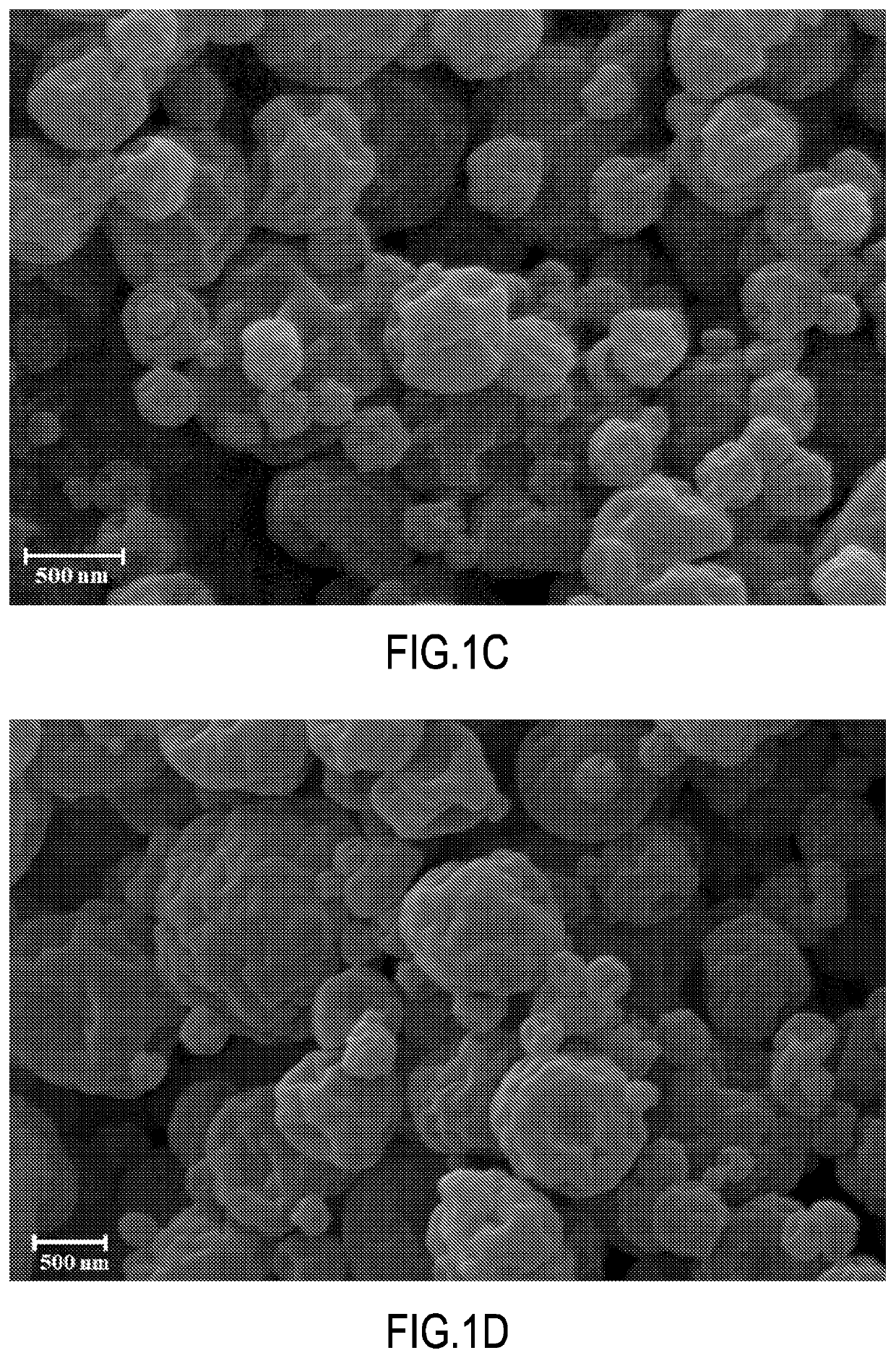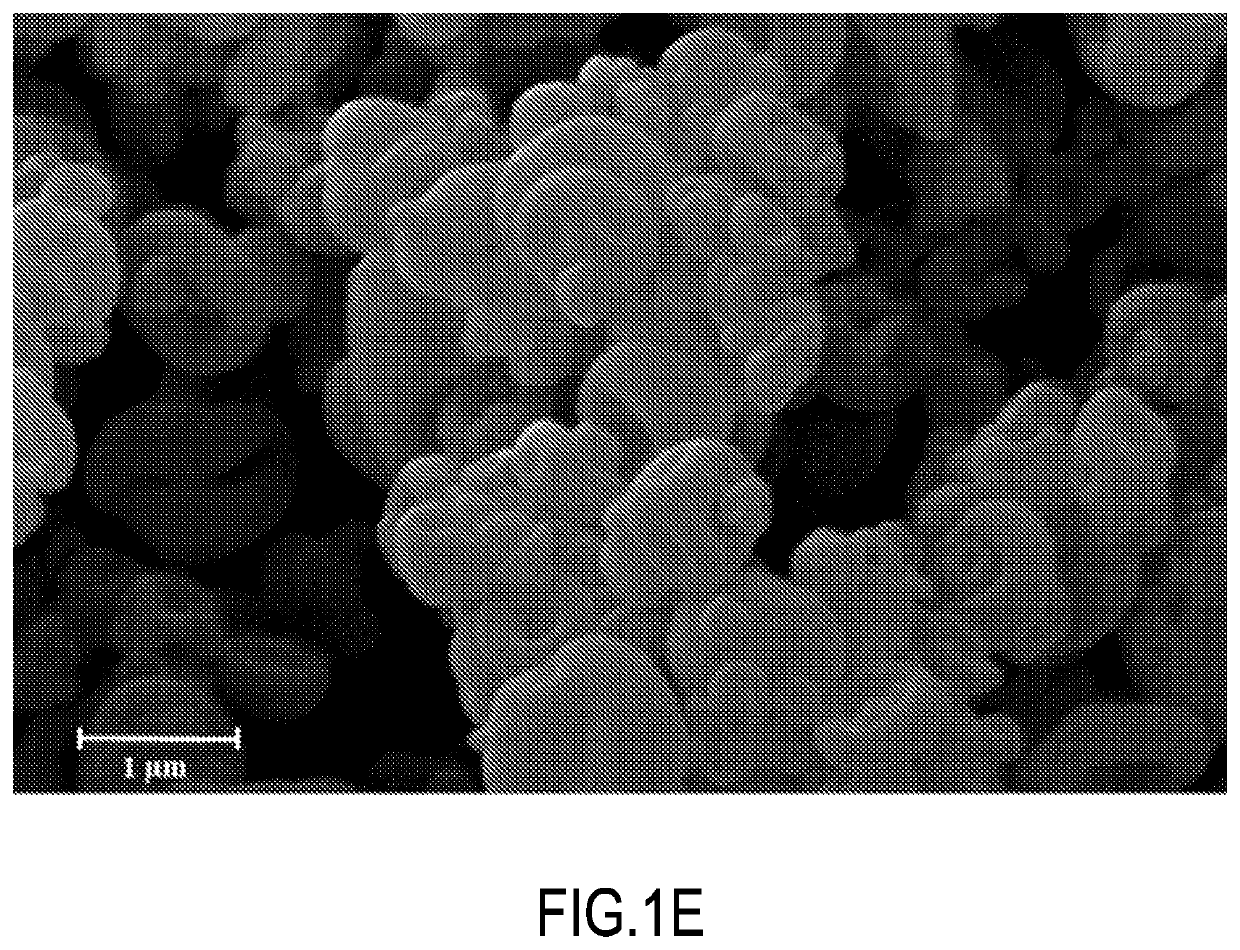In situ gelifying powder
a gelifying powder and gel technology, applied in the field of gelifying powder, can solve the problems of chronic wounds, affecting the gel formation effect, so as to improve the adhesive capacity of the gel formed, reduce the gelification time, and improve the gel formation
- Summary
- Abstract
- Description
- Claims
- Application Information
AI Technical Summary
Benefits of technology
Problems solved by technology
Method used
Image
Examples
example 1
on of the Liquid Compositions
[0234]1A) aqueous composition (without inorganic salts)
[0235]1a) Preparation of the sodium alginate solution
[0236]53.6 mg of sodium alginate (FMC Biopolymer) having content of mannuronic residues of 65% by weight with respect to the total weight of the sodium alginate, were added to 21.4 ml of distilled water leaving the solution under agitation for approximately 10 minutes.
[0237]1b) Preparation of the sodium alginate and pectin aqueous composition
[0238]To the sodium alginate solution prepared as described in a) were added 53.6 mg of amidated pectin (Herbstreith & Fox) having a degree of amidation (DA) between 18-23% and a degree of methoxylation (DM) between 27-32%, leaving the resulting solution under agitation for 15 minutes.
[0239]1c) Preparation of the colloidal chitosan solution
[0240]8.9 mg of chitosan (Sigma Aldrich) having molecular weight between 50000 and 150000 DA were added to 3.6 ml of a solution of HCl 0.1 M in distilled water leaving under ...
example 2
on of the Composition in Powder Form
[0258]2A) preparation of the composition in submicrometric powder form
[0259]A sample of each of the liquid compositions obtained respectively in the examples 1b (COMPARISON), 1d and 1e (INVENTION) was maintained under continuous agitation and was subjected to an atomization process by nanospray drying technology by means of Nano Spray Dryer B-90 apparatus (Buchi Laboratoriums-Tecnik, Flawil, Switzerland).
[0260]The inlet Temperature in the atomizer of the composition 1b (COMPARISON) was 90° C., while the inlet Temperature of the specific composition 1d or 1e (INVENTION) was 50° C., i.e. advantageously lower.
[0261]The remaining process parameters were the same both for the comparison composition, and for the composition of the invention, as described below:[0262]Atomizer feeding rate 9.5 ml / min;[0263]Diameter of the atomizing nozzle 4.0 micron;[0264]Incoming air flow rate 100 L / min;[0265]Pressure in drying chamber 38 mbar;[0266]Relative spray rate 9...
example 3 — morphological
Example 3—Morphological Analysis of the Composition in Powder Form of the Invention
[0292]The compositions in powder form according to the invention (2d1) and (2d2) prepared respectively by nanospray and minispray drying technology as described in the example 2A or 2B were analysed by Scanning Electron Microscopy (SEM) by means of a Carl Zeiss EVO MA 10 microscope equipped with a secondary electron detector (Carl Zeiss SMT Ltd, Cambridge, UK). The powder particles were coated by a 200 Å thick gold patina by means of a LEICA EMSCD005 metallizer. The analyses were conducted at 20 KeV. A minimum of 20 SEM images were obtained for each individual sample, to verify the morphological uniformity of the particles.
[0293]As shown in FIG. 1A, from the SEM analysis it was found that the particles of submicrometric powder (2d1) have spherical shape and high surface roughness, which makes the particles susceptible to contact with the fluid.
[0294]As shown in FIG. 1B, from the SEM analysis it was fo...
PUM
| Property | Measurement | Unit |
|---|---|---|
| molecular weight | aaaaa | aaaaa |
| molecular weight | aaaaa | aaaaa |
| particle diameter | aaaaa | aaaaa |
Abstract
Description
Claims
Application Information
 Login to View More
Login to View More - R&D
- Intellectual Property
- Life Sciences
- Materials
- Tech Scout
- Unparalleled Data Quality
- Higher Quality Content
- 60% Fewer Hallucinations
Browse by: Latest US Patents, China's latest patents, Technical Efficacy Thesaurus, Application Domain, Technology Topic, Popular Technical Reports.
© 2025 PatSnap. All rights reserved.Legal|Privacy policy|Modern Slavery Act Transparency Statement|Sitemap|About US| Contact US: help@patsnap.com



